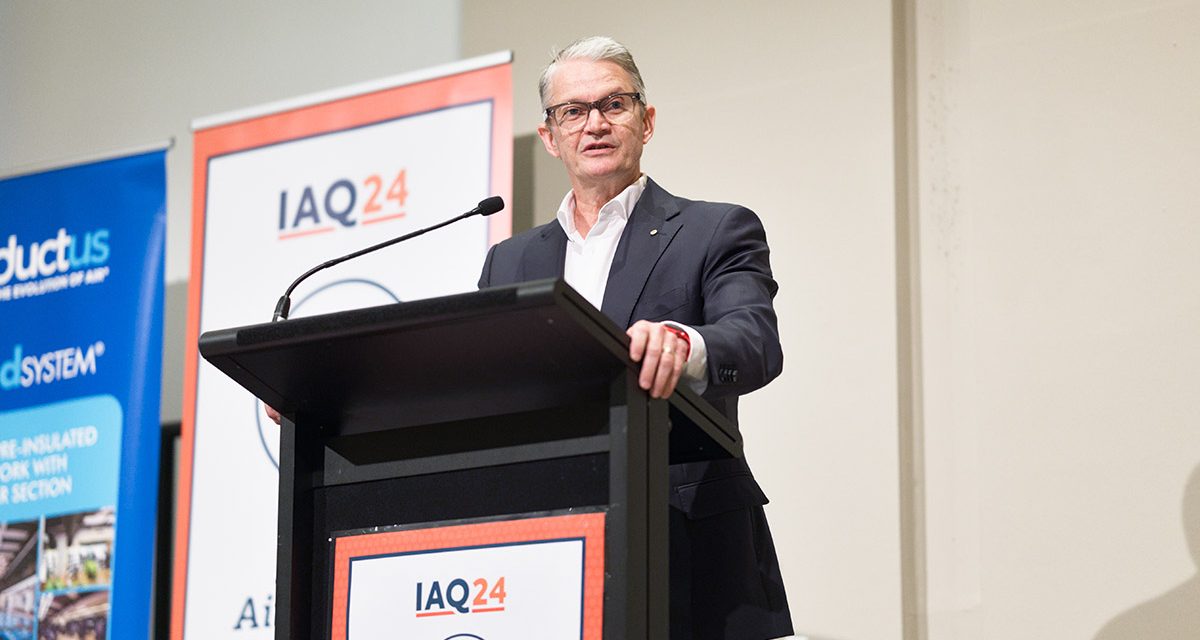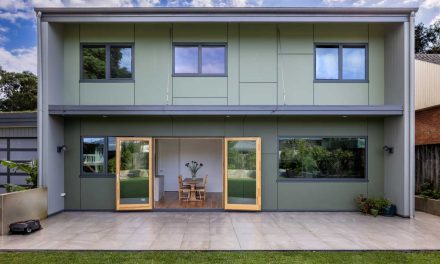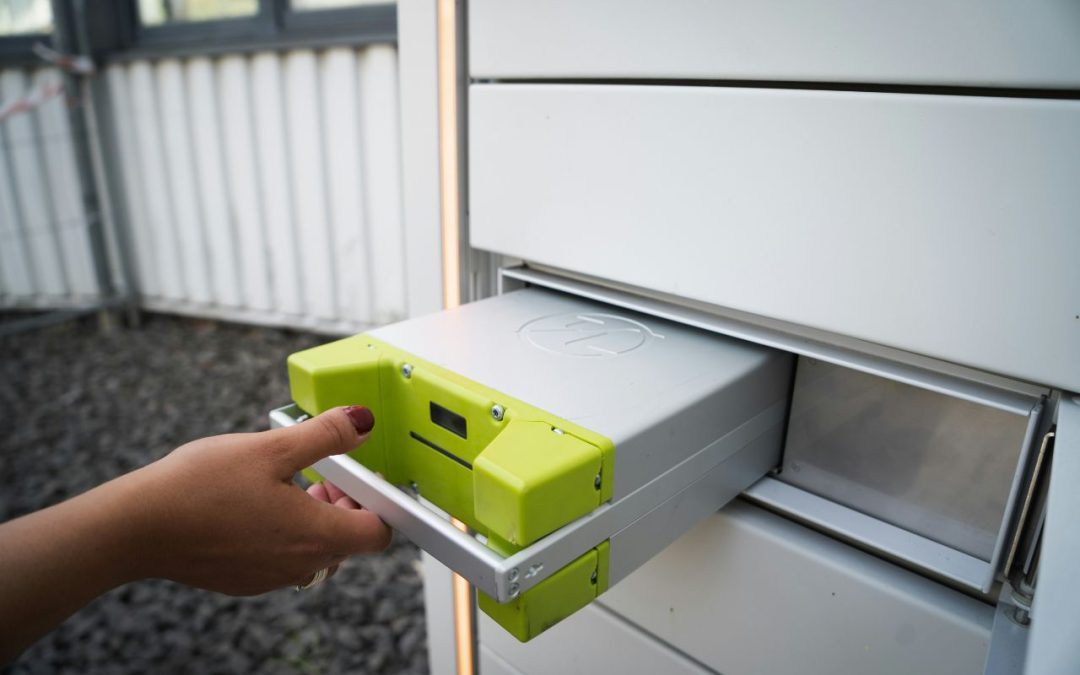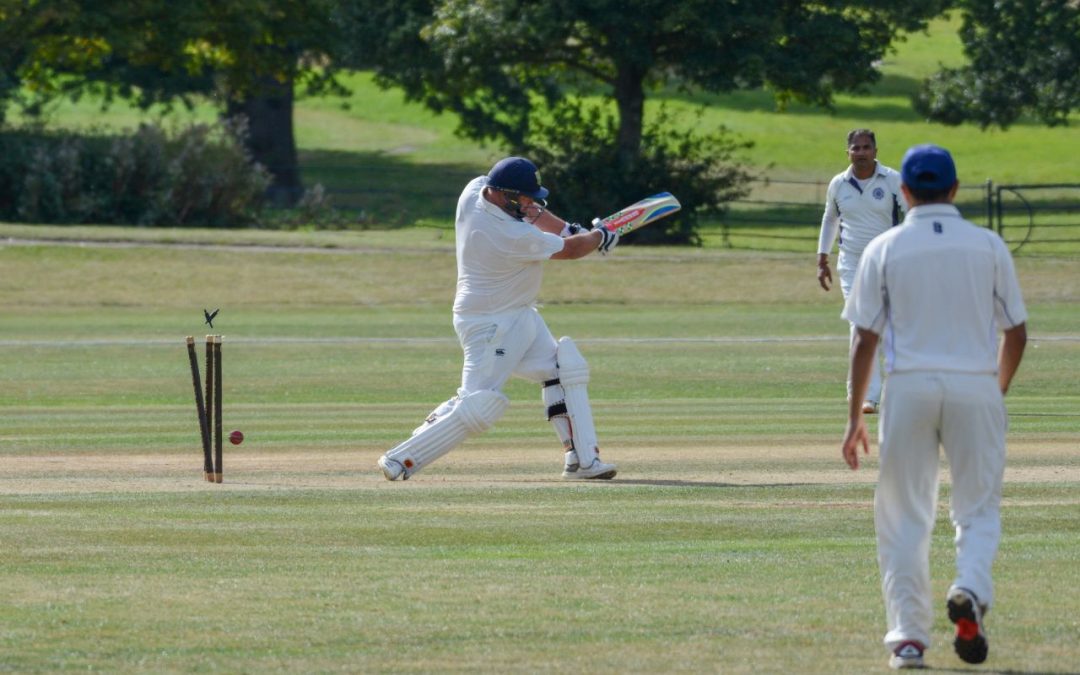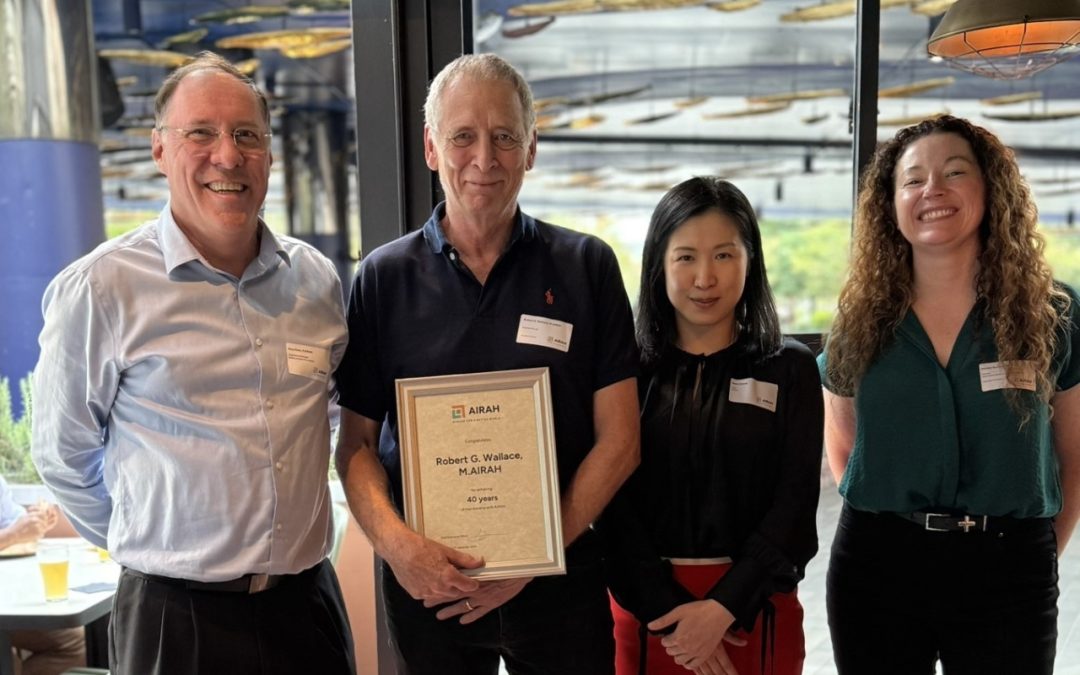AIRAH’s IAQ 2024 conference underscored the once-in-a-century opportunity to improve indoor air quality – and what we need to do to seize it.
From July 15–16, Crown Melbourne played host to more than 150 of Australia’s finest minds in indoor air quality, who participated in 22 diverse and engaging sessions across the two days.
The speakers at AIRAH’s 2024 Indoor Air Quality Conference (IAQ24) represented all angles of the IAQ conversation, with presentations from mechanical engineers, medical and public health experts, architects, building controls experts, occupational hygienists, policy leaders, and business managers. The attendees were as diverse as the speakers, with everyone from 50-year AIRAH members to young and upcoming HVAC&R professionals in attendance.
Change in the air
From the outset of the first day, one message was clear: the time to act on indoor air quality is now. AIRAH President Mikaila Ganado, M.AIRAH, talked about this in her opening address before Professor Brendan Crabb reiterated the point in his keynote speech.
Crabb, an infectious diseases researcher who heads the Burnet Institute, emphasised how the ongoing COVID-19 pandemic has opened a “once-in-a-century” policy window and placed IAQ firmly on the political agenda.
In his speech, Crabb also talked about the importance of understanding modes of transmission and regular monitoring in preventing the spread of infectious diseases.
He pointed out that discovering disease transmission vectors and developing vaccines are the two factors that have increased human life expectancy over the past century. He also noted that the only decrease in global life expectancy trends this century has come from COVID-19.
Crabb left the audience with a question: With the pandemic still fresh in everyone’s mind and the social licence to make effective changes, are we ready to seize the moment and implement standards that will truly improve IAQ?
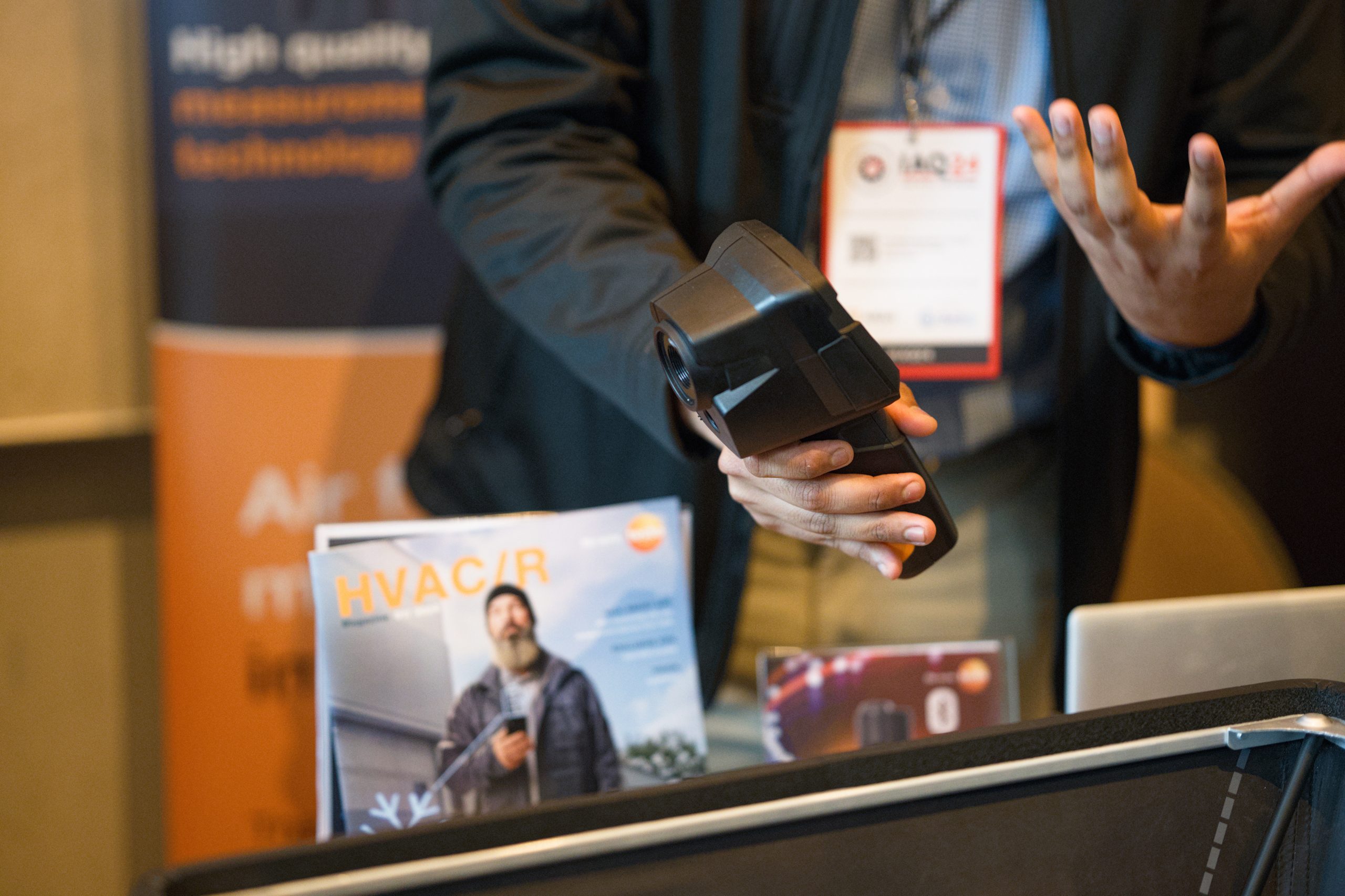
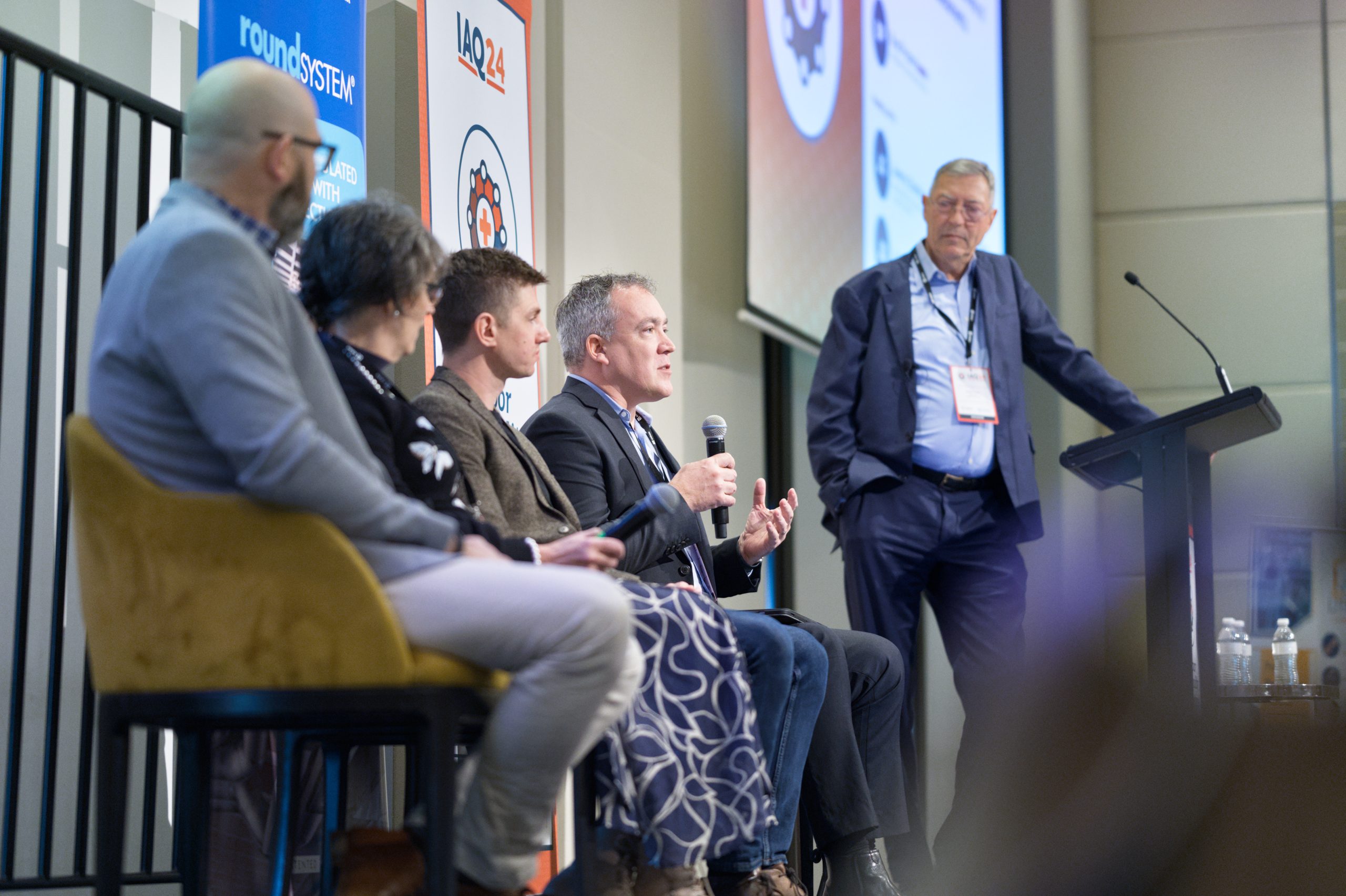
A follow-up question is how to leverage this momentum to make genuine change. One takeaway from the conference was the importance of discussing IAQ not just in terms of public health and scientific research, but as an accessibility issue.
Plum Stone is a health policy expert who founded the Safer Air Project, a charity that aims to create healthier and more inclusive indoor spaces for all. With several close family members who are immunocompromised, Stone understands the importance of safe indoor air.
She highlighted the burden poor IAQ places on those who are most vulnerable and the devastating effects that isolation can have on them, both in terms of their social life and their career.
As Stone noted during the day one panel discussion, “once you’ve thought about IAQ as an accessibility issue, you can’t unthink it.” She believes that advocating for an accessibility and inclusion focus on the importance of IAQ is the key to winning hearts and minds.
Physician and public health advocate Professor Bronwyn King supported this perspective during her presentation, which looked at how regulations abroad and successful education campaigns on other public health issues – such as sun protection and smoking – can serve as inspiration for Australia’s IAQ sector.
King talked about how poor IAQ has affected her own children’s ability to attend school, and the impact high CO₂ levels can have on classroom performance. She proposed the slogan “Clean air makes clever kids” as a way of expressing this sentiment succinctly.
A delicate balance
One of the other key themes to emerge from IAQ24 was the incredible intricacy required to achieve optimal IAQ. Isaac Newton told us that every action has an equal and opposite reaction, and that’s certainly the case when it comes to air chemistry.
Sonia Holzheimer, M.AIRAH, is a Cairns-based mechanical engineer with more than two decades of experience designing HVAC systems for hot, humid climates. She talked about the complex relationship between temperature and humidity in her presentation, which focused on the need to adjust HVAC modelling to adapt to a changing climate in which the southern parts of Australia are getting hotter and wetter.
As Holzheimer pointed out, adapting to a warming climate isn’t as simple as changing the settings on your air conditioner. When air gets hotter, it’s capable of carrying more moisture, meaning that even if the “relative humidity” remains the same as air temperatures rise, the conditions will become more conducive to mould.
Dealing this will pose major challenges to Australian HVAC designers over the coming decades, challenges she implored them to consider now, not when it’s too late.
Thermal performance or IAQ?
Professor Rebecca Bentley is a researcher at the University of Melbourne and Director of the NHMRC Centre of Research Excellence in Healthy Housing. Bentley and her team have led research focusing on the performance of housing in Australia, both from a thermal comfort and IAQ perspective.
In her IAQ24 presentation, Bentley pointed out that, while improving the thermal performance of Australia’s housing stock is important, it should not come at the expense of IAQ. Sealing up a leaky house without adding the appropriate ventilation is a perfect recipe for mould and other issues that come about from poor IAQ.
Bentley discussed her team’s research, which shows that mould in Australian residential buildings is nearly twice as harmful to human health as cold is. The research finds that removing mould from all housing across Australia would save around 109,000 health adjusted life years across our population. It would also reduce healthcare costs by $2.82 billion over 20 years and improve household income by $4.21 billion thanks to improved productivity.
Patrick Chambers, Affil.AIRAH, was even more direct in his assessment of the situation. In his presentation, he said that if improved thermal performance in old homes were to come at the expense of IAQ, then the only healthy solution would be to leave the buildings unsealed and “wear warmer clothes”.
Chambers pointed out that the HVAC&R industry tends to have a “solution bias”, whereby designers follow accepted norms without necessarily gathering the evidence to show that that approach will deliver the intended outcome.
Speaking candidly
The keynote speech on day two came from Associate Professor Christhina Candido from the University of Melbourne. An architect with a PhD in civil engineering, Candido leads the university’s Sustainable and Healthy Environments (SHE) Lab, which focuses on how the built environment can improve occupant health and become more sustainable.
Candido spoke about how the use of HVAC systems doesn’t necessarily reflect needs, and how this can create problems and also lead to energy overconsumption. She highlighted the classic HVAC problem of office buildings being too hot in winter and too cold in summer, a trend that suggests a schism with the natural environment outside.
Troublemakers galore
Jonathan Dalton from Viridis Australia began his presentation by comparing high-performance buildings to the zippy sports car that was the apple of his eye as a young man. The car was capable of amazing things, but only in the right hands.
Similarly, high-performance buildings work beautifully when used as intended, but can go horribly wrong if occupants don’t understand how to use them. Dalton pointed out that many top-spec buildings are capable of gathering all kinds of important analytical data, but don’t necessarily do so. Even when they do, that data isn’t necessarily harnessed in a way that helps improve the building’s performance.
Health scientist and engineer Brad Prezant, Affil.AIRAH, focused on a different kind of problem: buildings whose one fatal flaw can have a disastrous effect on indoor air quality and, as a consequence, on occupants’ health.
Prezant talked about how air functions as a “thin liquid” and how invisible pressure differentials cause it to behave in unexpected and problematic ways. He offered several fascinating examples of poor HVAC design causing chaos, including a multi-storey commercial building in Philadelphia whose poor design funnelled air from cooling towers directly onto the street, infecting people waiting at a nearby bus shelter with Legionnaire’s disease.
From analysis to action
The panel session on day two explored how we measure IAQ, and how we subsequently address the issues identified.
The panellists acknowledged the work going on to establish operational standards for indoor air, but warned that data is often missing important components, and can easily be misunderstood. Associate Director of AIRAH’s IAQ STG Claire Bird, Affil.AIRAH, stressed that it takes an expert to interpret data and build a narrative, often with the help of occupant surveys. Nevertheless, the group agreed that defining “good, better and best” levels would be a big step forward.
Another point from the session was that company directors should know and take responsibility for the pollutants their employees are being exposed to – whether they are on a factory floor with obvious sources of contamination, or in an office building. All agreed that involving this stakeholder group in the IAQ conversation could drive action.
Social networking
The format of the conference allowed IAQ experts to socialise and connect not only with one another, but with the conference’s sponsors during meal breaks. The event’s sponsors were:
- Major sponsor: Ductus
- Supporting sponsors: Camfil and Euromate
- Trade display sponsors: Panasonic, Afpro, Testo, Siemens, Gastech, Podium, CO₂ Radical, Active Environmental Solutions, Eurofins, and Carbon Advisory Group
- Industry partner: Litmas.
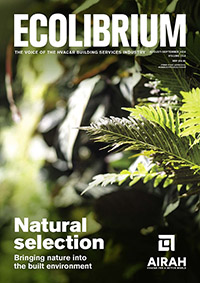
This article appears in ecolibrium’s September-October 2024 issue
Want to read more?
Click here to view our archive of feature articles.
